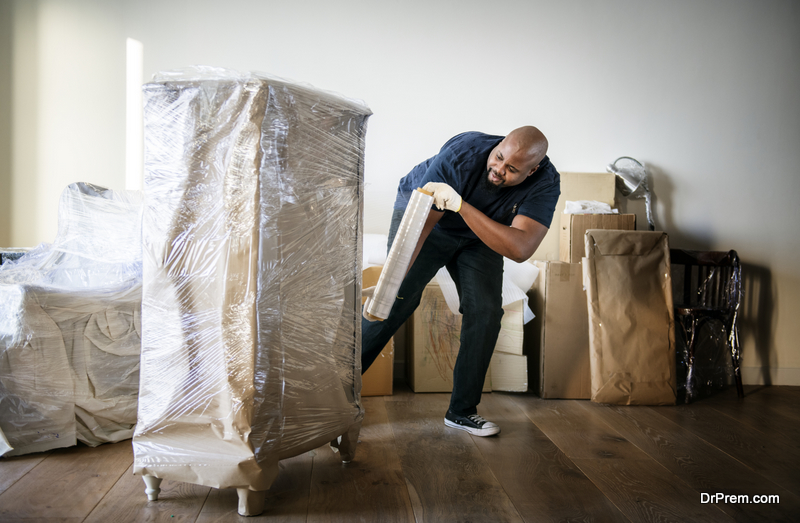Moving is usually a hectic experience since it entails many activities. You have to look for movers who can protect your furniture when moving them and ensure they can deliver your furniture safely to the next property.
You must go through several steps to ensure your furniture is disassembled and securely packed, so it’ll be transported safely to its new destination. This makes the unpacking process a lot easier. It allows you to settle into your new place with ease. You can visit this site to get professional movers who can provide quality services and ensure convenience during your move.
To prevent damage to your furniture while they’re in transit, you can follow the tips in the outline below:
1. Gather Everything You’ll Need For Shipping

A common myth is that you only need cardboard boxes and packing tape to protect your furniture during a move. Even though these items provide some protection, they can’t guarantee that your furniture will have maximum protection. Some helpful packing supplies include:
· Blankets
Moving blankets specifically designed to protect delicate items like wooden or leather furniture can be purchased. These blankets are ideal for providing superior protection because of their softness. Moving blankets should protect the furniture’s legs, which are particularly prone to damage.
· Tape
A high-quality packing tape, which is broad, strong, and won’t leave sticky marks or peel paintwork off your furniture, is worth the investment. To make sure of this, don’t apply the tape directly on the furniture to avoid damaging painted or polished surfaces.
Wrap furniture with cardboard pieces or bubble wrap, then secure them in place with the help of packing tape. Thicker protectors like moving blankets can also remain in place using packing tape.
· Plastic Wrap
If you have a lot of furniture with drawers, doors, or other moving parts, you should consider purchasing plastic wrap.
Plastic wrap is a transparent plastic film that adheres firmly to objects such as cabinet drawers and wardrobe doors during a move. It will ensure your items are safe and sound when the weather isn’t on your side.
If there’s any doubt, note that it’s possible to protect your furniture with these items. Mishandling can cause furniture to break due to its weight. To avoid damage to them during loading and unloading, use bubble wrap and specialized sofa or mattress covers.
2. Dismantle Your Furniture
You should disassemble your furniture whenever possible to pack them into moving boxes more compactly. This makes it easier to move furniture and reduces the risk of damage caused by the moving parts while in transit. If you plan to dismantle your furniture, keep these tips in mind:
· Read Instructions Carefully
To ensure proper disassembly and reassembly of the furniture, always follow the manufacturer’s instructions carefully. You can document the process by taking photos while dismantling the furniture. Then these can be used when reassembling the item.
If you lack access to a camera, jot down your observations and store them safely. In addition, you can find instructions for dismantling the furniture online or by contacting the furniture store where you purchased it.
In most cases, when you purchase ready-to-assemble furniture, it comes with assembly instructions. You may have stored it in a drawer somewhere, and you just need to look for it.
If you’re taking apart a piece of furniture and you realize there are a lot of parts, it’s a brilliant idea to label each one. Use masking tape and a highlighter or marker to label each piece with instructions you can follow a few days after. This will make reassembly as simple as possible. However, you will have to remove it once you finish assembling the furniture to preserve its appearance.
· Secure Bolts And Screws
You can safely store bolts, screws, and dowels in transparent plastic bags. After that, you can secure the bag to the corresponding piece of furniture to avoid misplacing it. Alternatively, you may simply label the bag and keep it in a safe location to protect the paintwork on furniture.
Be careful when using a drill to remove bolts, screws, and dowels to avoid damaging the furniture. When putting them back together, do the same. Applying too much force on the drill may result in stripping the screws or splitting the wooden furniture.
A stripped screw is one whose head can no longer be removed with a screwdriver, resulting in permanent damage to your furniture. Take your time and be thorough when removing all the parts.
3. Properly Wrap The Furniture

There are two types of packing materials you should never move without: plastic sheeting and bubble wrap. Plastic sheeting is clingy and tear-resistant, ensuring your furniture is protected while in transit. On the other hand, bubble wrap is better suited for protecting delicate wooden items such as tables and chairs.
Instead of plastic sheeting, you can use old blankets. Also, you can use corrugated cardboard sheets as a buffer between two wooden pieces, preventing them from slamming together.
You only need bubble wrap to protect glass surfaces like mirrors and tables. Consider taping the mirror with painter’s tape in an ‘X’ pattern before wrapping it to reduce the likelihood of it shattering. Pay special attention to the corners of the glass or mirror. Wrap the item in two corrugated cardboard sheets and secure it in place.
4. Assemble And Pack The Furniture
It’s well worth the time and effort to clean and polish your furniture before moving day to minimize the risk of damage. But wiping your furniture to get rid of dirt, dust, and other debris may leave microscopic scratches on the surface. Hence, use a microfiber cloth to wipe the furniture down before wrapping it in bubble wrap to remove any loose particles.
Remove the knobs, handles, and casters before moving any cabinets or drawers. Also, adding more storage space is as simple as taking out the drawers and placing lighter items inside.
5. Strategically Place Objects

Placing furniture all over in a disorderly manner creates inefficiency and confusion. Instead of simply piling boxes on top of one another, think about how you can organize the space. You need a well-thought-out plan to ensure your furniture doesn’t get damaged during transport. Here are a few essential things to remember:
- Stack the lighter boxes on top of the heavier ones and place the latter on the truck’s floor. Create a wall of boxes on the truck’s back end to keep your furniture in place as you unload it.
- You can put lightweight boxes on top of dressers. To keep them from slipping, place a few small boxes between them.
- Upholstered furniture needs special attention. Secure the pieces to truck hooks with a rope, then choose what to pack around them. Even if your furniture is already wrapped in plastic, adding a layer of packing blankets is good.
- When the time comes to unload the truck, remember to exercise caution. Make sure the movers have a clear path to each room. They’ll be less likely to damage your heavy furniture if they spend less time searching for a suitable spot.
6. Plan Early
Relocating furniture requires planning ahead of time. The moving day can be stressful, so remember to dismantle and wrap up your furniture at least a week in advance. It’s best to start with pieces of furniture you don’t use very often and work your way up to more permanent fixtures like the bed frame.
To avoid unnecessary stress on the day itself, do as much preparation as possible. Ticking one or more minor tasks on your to-do list can make a significant difference.
Preparing ahead of time guarantees that your furniture will be less likely to experience any damage and will still make it to your next move. To ensure your furniture arrives in perfect condition in your new home, follow these guidelines:
· Keep Passageways Free Of Obstructions
Decluttering the doorways and entryways is a practical way to make sure your pieces of furniture make their way to their designated areas as conveniently as possible. Doing so also makes it safer for the movers who might trip on a random item in the way.
Keep the doors as wide open as possible using a doorstop during the move. Moving furniture in and out of the house will be a breeze because of this. And the furniture won’t scratch up the corners of the walls as the moving team directs them to their ideal positions.
· Unpack And Reassemble The Furniture, Then Clean It
Finally, clean them thoroughly as soon as your furniture pieces arrive at their new location. It’s common for furniture and cushions to collect dust and dirt while on the road. It’s recommended to wipe off the loose dust and dirt from them before reassembly.
Conclusion
Moving can be stressful and tedious. Therefore, you must make early preparations for transporting all your stuff from one place to another. Your furniture and other belongings are prone to damage when not correctly wrapped or positioned. The guide above can walk you through essential tips to help you protect your furniture when moving.
Article Submitted By Community Writer




